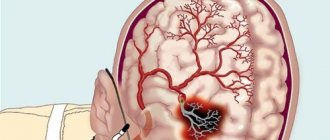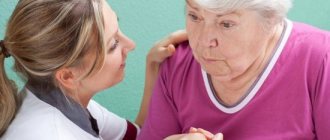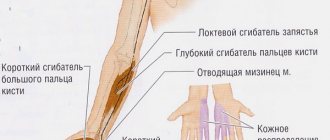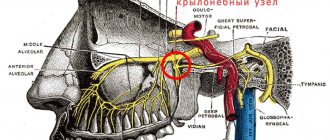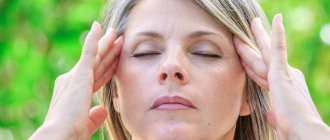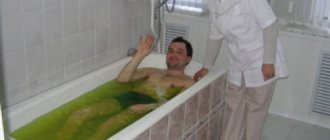Causes:
Internal trembling in the body - causes
The essence of the process is hidden in the neurological component of ensuring the vital functions of the body. The autonomic nervous system (one of two large subsections of the nervous system) controls and organizes the work of all internal organs and communicates with all muscles, vessels, tendons and bones. It is divided into sympathetic and parasympathetic divisions - antagonists in their action. Departments are in a moving balance. The sympathetic department is responsible, roughly speaking, for activating the body’s work, the parasympathetic department is responsible for anticipation and rest. In addition, there are neurons responsible for muscle tone - they are needed to maintain body position, as well as for the body’s readiness to withstand external stimuli.
Thus, internal trembling in the body normally occurs in a stressful situation - an exam (the body sees a threat and prepares all systems for a speedy escape), a meeting with a beautiful and unfamiliar representative of the opposite sex, a sudden threat. Any of these situations is stressful. In this case, trembling is the right and necessary moment in life. In other cases, when a symptom occurs without a reason, we can talk about an imbalance that has arisen in the functioning of the nervous system.
The most common cause of such an imbalance is chronic stress, depression, long-term infectious processes, chronic non-infectious diseases - that is, those conditions in which nerve cells are depleted by excessive stress, do not have time to recover, or recovery occurs slowly as a result of a decrease in their nutrition. Insufficient blood supply, insufficient amounts of vitamins, micro- and macroelements in the food received, an imbalance in the diet are the causes of decreased nutrition of neurons. In such cases, a wide variety of disruptions in the functioning of the nervous system are observed - these include nervous tremors.
Another, less common, cause of internal tremors are all sorts of defects at the level of higher control centers of the autonomic nervous system - the cerebellum, reticular formation, thalamus and hypothalamus, cortex and subcortical formations. The most common cause of chronic cerebral ischemia is cardiovascular disease. But degeneration of nerve cells in the brain can also occur as a result of injuries, infectious processes, and acute cerebrovascular accidents.
Why does my 11 month old baby always shake after sleep? Is it the same with yours or not?
Answers:
Your Personal Brand of Heroin
uh... well, mine shudders after sleep before peeing on the potty, but that's probably not what you mean
Marla
visit a neurologist. urgently.
Kulema
Maybe he's frozen?
Sonche
no ttt didn’t notice that
Ritka the Bandit
Before the whistle, our son seemed to shudder, as if he was frozen. this is a second in time...
Katyusha Zhuravleva
see a neurologist!
Igrula
none of the three children were shaking, like...
Olga Slukhova
Trembling can be caused by a lack of calcium.
Katyunya
Happens sometimes
Thais Vaisman
do you mean tremor? The neurologist should prescribe treatment...
Tatiana
Miss
It's probably a tremor. My daughter had the same thing. I don't think it's a big deal. you need to do a massage, as this may also be due to muscle tone
Lena
dear mommy, go to the doctor and preferably have more than one check your child’s health, this is not a joke, and you will feel calmer
Treatment:
Unfortunately, there is no specific treatment for internal tremors as a separate symptom. All treatment is aimed at restoring normal functioning of neurons. That is, if you restore balance in the functioning of the nervous system in general, then such a “trifle” as constant internal trembling in the body will go away.
Internal tremors in the body - treatment
The approach to this task is quite differentiated, so all appointments should be carried out exclusively by a specialist - a neurologist. If the cause lies in heart or vascular disease, various chronic infections or depression, treatment should begin with these ailments. Otherwise, “neurological” drugs will be ineffective.
Usually, herbal sedatives are prescribed first. They block excessive excitation of neurons, thereby allowing the body to restore them. In addition, neuroprotectors, vitamins (especially group B), and psychotherapy sessions are prescribed.
In other words, the treatment is complex - the doctor tries to influence the suffering structures from different sides to achieve maximum effect in the shortest possible time.
Self-medication for such an unpleasant, but not life-threatening, symptom as internal tremors in the body is permissible only in small quantities. Psychotherapy sessions and taking over-the-counter sedatives cannot do any harm, and if the problem is minor, they are quite capable of eliminating it. Otherwise, consultation with a specialist is simply necessary.
Symptoms of internal trembling in the body:
trembling in the body, trembling in the knees, weakness in the body, an attack of trembling, an attack of weakness, general trembling, severe weakness
.
Internal Trembling: Case Studies
Girl, 14 years old, high school student.
At the reception with my mother, a medical worker. The main complaint is severe trembling in the body and a feeling of lack of air. From the anamnesis: frequent, severe acute respiratory viral infections (at least 5-6 per year).
The present illness began on July 23, 2012. The girl woke up at night and suddenly felt a strong trembling throughout her body and dizziness. “I still couldn’t breathe and my heart was pounding.” Mom measured her blood pressure - 140-100. They called an ambulance and the attack was stopped.
June 24 – tremors in the body resumed, but were not pronounced, episodes of difficulty breathing. June 25 – repetition of the attack. Pressure - 150-100. Ten days later there was another severe attack. June 26 - two attacks in a row.
We turned to a pediatrician for help, then a neurologist. A diagnosis of VSD was made. Treatment was prescribed: Persen, Teraligen and Neuromultivit. However, there was no positive effect. The attacks were repeated with the same force, and in the inter-attack period tremors in the body and a feeling of lack of air persisted.
By the beginning of the school period, fears appeared. The girl stopped leaving the house. She began to complain of general weakness. A complete medical examination of the body was carried out, including multispiral tomography of the abdominal cavity (adrenal glands were examined), REG, EEG, duplex scanning of cerebral vessels, nuclear MRI, etc. No pathology was found.
An examination in our clinic using CIG (cardiointervalography) revealed a rigid sinus rhythm, which indicated extreme overexcitation of the autonomic nerve centers. These centers were localized using computer thermometry and treatment was prescribed.
All of the above symptoms disappeared in the patient after the seventh physiotherapy session.
Male, 57 years old, retired, former military man.
In September 2009, I flew to Spain on vacation. While approaching Madrid, the plane had a technical problem with the landing gear, the plane was forced to circle over the airfield to run out of fuel and prepare for a hard landing. Many passengers are hysterical. Everyone is preparing for the worst...
But the landing went well and no one was hurt.
Having already found himself on the runway, realizing that the worst was behind him and having calmed down internally, the man suddenly felt extreme weakness, unsteady heartbeat and severe tremors in his legs, which lasted about ten minutes and went away on their own. Two weeks later, he suddenly develops a feeling of unexplained anxiety and palpitations. And by the end of the month the first panic attack develops.
The man contacted the Clinical Center for Autonomic Neurology a year after the described episode (before that time he had been observed by various specialists, including psychiatrists, and received drug treatment and homeopathy).
Main complaints: trembling in the legs, turning into tremor of the hands and trembling of the whole body. Daily panic attacks with severe palpitations, fear of death, severe loss of strength.
After the first course of treatment, the frequency and severity of panic attacks decreased sharply. A repeated course, carried out three months later, completely relieved the patient of the pathological manifestations of autonomic disorders.
Types of tension during trembling - possible causes
Note ! Symptoms, if the body shakes slightly, usually appear immediately: anxiety, fear in the stomach or lower abdomen, trembling in the legs, sinking heart and nervousness.
Localization of excitement or trembling occurs in a variety of places, from internal organs to all extremities, look for the cause:
- The head or face can shake sharply due to severe nervous tension, in the case of partial paralysis, inflammation of the facial nerve, if there is spastic torticollis;
- A feeling when a tremor is felt throughout the body due to a sharp release of adrenaline into the blood or due to endocrine pathologies;
- It happens that a sudden attack of trembling appears and a strong “trembling” runs through the sternum and abdomen. This is inherent in some people, the reason is increased emotionality. In moments of shock or at the beginning of stress, the body shakes;
- Muscular tremors in the hands and knees are associated with fatigue from physical work, the reason may be a deficiency of essential minerals;
- The body and hands shake, usually in the morning, if there was an excess of alcohol or caffeine the day before. The reason is an overdose;
- Often the legs of pregnant women shake in the last trimester, this is caused by the load on the spine and the musculoskeletal system in general. The body often shakes during toxicosis - this is the main reason;
- Increased heartbeat occurs with some diseases of the cardiovascular system. The reasons lie in dystonia and heart failure. The heart begins to tremble and pound if an attack of fear begins or strong internal excitement arises;
- The eyelids and head tremble in excitement with signs of neurosis, migraine, during a nervous tic;
- Tension in the neck and back of the head is osteochondrosis or problems and causes associated with the spine;
- A child may experience trembling when he is nervous or afraid. Neurosis is fraught with nausea and muscle spasms. To calm the child’s nervous state, to find out the reason, the task of parents is especially important to induce calmness when falling asleep;
- During menopause, women often experience somatic disorders during attacks, and for this reason coordination suffers.
Nothing just happens, and if a person experiences periodic discomfort that prevents him from living a normal life, the etiology and cause of the disease should be identified as early as possible. A comprehensive examination will help to understand why the body shakes and severe nervous tension occurs, leading to disorders in the form of buzzing, tremor or trembling.
For neurosis and other aggravating symptoms, the patient is referred to:
- For EEG, ultrasound and ECG - referred by a therapist or cardiologist;
- REG of vessels - vascular surgeon or attending physician;
- Echo - EG, MRI of the brain - the prerogative of a neurologist;
- For detailed laboratory examination of blood and urine tests.
You may need the help of a hematologist, endocrinologist, or psychotherapist; they are able to understand the cause and eliminate it.
The treatment course depends on the cause of the nervous condition based on:
- Sedatives;
- Vitamin and mineral complexes;
- Antidepressants;
- Hormonal drugs;
- Psychotherapeutic procedures;
- By eliminating the provoking factors, the cause of the trembling disappears.
Motherwort, hawthorn, valerian, peony and all sedative medicines are gentle folk remedies when the body is shaking.
Antidepressants are indicated when the body is shaking, but only after a doctor’s prescription for depression, due to anxiety and phobia. These include: Amitriptyline, Fluoxetine, Sertraline, Azafen.
Vitamins B, A, C, D, calcium, selenium, magnesium.
Important! Sports, yoga and meditation serve to protect the body from nervous disorders.
Source: stopvsd.net
Other symptoms of VSD
Head and leading specialist of the clinical center for autonomic neurology, doctor of the highest category, candidate of medical sciences, clinician with extensive experience in the field of laser therapy, author of scientific works on functional methods of studying the autonomic nervous system.
—Put yourself in the doctor’s shoes. The patient's tests are fine. All kinds of examinations from ultrasound to MRI show the norm. And the patient comes to you every week and complains that he feels bad, can’t breathe, his heart is pounding, he’s sweating, that he constantly calls an ambulance, etc. Such a person cannot be called healthy, but he does not have a specific disease. This is VSD - a diagnosis for all occasions, as I call it...
Hypertensive crisis
High blood pressure may appear suddenly. This condition is called hypertensive crisis. During a crisis, blood pressure rapidly rises to critical levels. Since this condition appears suddenly, the body does not have time to adapt to the change in blood pressure on the walls of blood vessels. All this is accompanied by a number of symptoms, including:
- lack of air;
- pain in the heart area;
- tachycardia;
- tremor;
- chills.
VSD in faces
This page contains excerpts from patient histories, covering the main complaints with which people turn to us for help. This is done with the goal of showing how different and “complex” the symptoms of vegetative-vascular dystonia can be. And how closely it is sometimes “fused” with disturbances in the functioning of organs and systems. How it “disguises” itself as “heart”, “pulmonary”, “stomach”, “gynecological” and even “psychiatric” problems that people have to live with for years...
The release of adrenaline is what causes the whole body to shake. For the body, stress is an anomaly. For example, internal trembling in the body is familiar to every person. For example, when the whole body shakes. Let's try to figure out why this happens and what to do in this case. There may be several reasons why the whole body is shaking. Everything that happens to the human body is surprising and incomprehensible. Self-medication for such an unpleasant, but not life-threatening, symptom as internal tremors in the body is permissible only in small quantities.
Many of us are able to control our emotions and actions. And that is why some of these funds are not available for free sale today. The cause of malignant tremor is respiratory, as well as renal and liver failure, however, this type of tremor can serve as a manifestation of cancer and stroke. Tremors in newborns are muscle spasms that occur in children from the first days of life. In most cases, trembling of the limbs manifests itself as cramps of the arms, legs and chin.
In this case, trembling is the right and necessary moment in life. In other cases, when a symptom occurs without a reason, we can talk about an imbalance that has arisen in the functioning of the nervous system. If the cause lies in heart or vascular disease, various chronic infections or depression, treatment should begin with these ailments. This is not a sign of illness and is not a disorder of any kind at all.
And that's really good. After all, an “abnormal” state is a deviation, it is a failure. And the reasons need to be looked for. Firstly, an increase in temperature due to some disease (this is both a virus and postoperative conditions).
Actually, this is what certain segments of the population take advantage of. But the most likely reason is stress. And there is absolutely nothing to be ashamed of. At this time, alcohol, caffeine, and drugs containing narcotic substances are contraindicated (they will only worsen the situation).
Damage to part of the face
To detect tremors in your hands, you need to take a sheet of paper and place it on your palm. If the leaf sways slightly, this is a sign of a fairly common, but not dangerous, tremor. Almost everyone has it.
If trembling in the hands intensifies, this is most likely due to lack of sleep or stress, due to which the body produces adrenaline. Note that tremors are often provoked by inhalers used to treat asthma, as well as excessive caffeine consumption.
Trembling that occurs on one side of the face may be a hemifacial spasm, which is caused by spontaneous nerve irritation. People suffering from Bell's palsy may also experience these twitches. Such symptoms often worsen if a person is tired. However, this type of tremor does not pose a danger to the human body.
Trembling inside the body
Parkinson's disease is another cause of tremors. The main symptoms of tremor include rhythmic vibrations of various parts of the body, visible to the naked eye. This includes trembling of arms extended forward and twitching of the eyelid, which occurs from time to time.
After collecting anamnesis, the doctor can in most cases easily make a diagnosis. In some cases, diagnostic procedures may be recommended for patients. This is high-frequency shooting with slow-motion projection of individual frames. Subsequently, a check is carried out using a thermograph - a device that records vibration in three planes. If the tremor manifests itself in a mild form and the course of the disease itself is not malignant, it is enough to use relaxing techniques, learn to relieve tension, and avoid stress.
NERVOUS AND/OR FEELING OF INTERNAL TREKING
In some cases, surgery is indicated. If such an unpleasant symptom is associated with nervous overstrain, fatigue, stress, then you can try using traditional medicine... Quite often, tremor of the limbs develops against the background of unfavorable heredity, at the same time, in some cases, tremor is malignant in nature and is quite severe... Very important to establish the cause of trembling of the limbs, as this is important for treatment and the choice of a specialist who will monitor the patient’s condition.
How to treat chills
Given the variety of causes, there is no general treatment algorithm. You need to act depending on the situation:
- If you are cold, drink hot tea, try to warm up and relax. This will remove the spasm.
- If chills occur against the background of an infectious disease and fever, consult a physician and follow his recommendations.
- If you are overstressed physically or emotionally, allow yourself a few minutes of relaxation: take a breath, calm down.
- If you experience chills regularly, see your doctor to rule out hormonal imbalances, developing diabetes, or nutritional deficiencies.
Causes and symptoms of tremor
Rarely, head tremors are observed, indicating serious neurological problems. At the same time, tremor in a newborn’s arms, legs and chin is not considered a pathology... In any case, it seems so, if you don’t know the reason for what is happening, you don’t see the logic that is present in any, even pathological, process. Some have met her only a couple of times, for others the trembling is common.
Firstly, if the body shakes, then this is our body’s cry for help. Tremors may develop in response to excessive consumption of coffee, tea, and medications containing caffeine. This disease has the following symptoms: the hands and head twitch rhythmically at rest, the trembling decreases or completely disappears when the patient begins to do something with his hands. Tremor is not considered an independent disease; it is considered one of the symptoms and signals some kind of problem in the body.
Weakness and trembling with osteochondrosis are dangerous signs indicating the onset or ongoing degenerative-dystrophic destruction in the spinal trunk. By paying attention to the trembling that occurs and starting treatment without delay, you can protect the spine from a dangerous illness and again feel the lightness and joy of movement.
Folk remedies for chills
Home remedies include:
- tea with mint, lemon balm, infusion of lingonberry or strawberry leaves - have a sedative effect, replenish the lack of vitamins and microelements;
- warming massage with essential oils gives good results for chills without fever;
- Dilute vinegar or alcohol with water, soak a towel in the solution, and wipe the body from time to time;
- tinctures of ginseng, eleutherococcus, and Chinese lemongrass eliminate pathological processes in the body and increase immunity.
What causes problems with the spine
Destruction of the cartilage structures (discs) of the spine does not occur suddenly. It is important not to miss the first, not always noticeable and worrying, symptoms. Timely response to problems in the spine, including twitching and trembling in the body, will return it to health, mobility and flexibility.
In most cases, osteochondrosis is caused by:
- incorrect (congenital or acquired) posture;
- injuries (bruises) of the spine;
- bad heredity;
- strong emotional shocks, regular stress;
- weakness of the back muscles;
- diseases associated with curvature of the feet;
- deficiency of vitamins and microelements (zinc, magnesium, manganese).
Osteochondrosis more often “visits” people who move little, are forced to be in a bent or other uncomfortable position. The patient's suffering is accompanied by convulsive twitching of the muscles of the legs and arms, tremors, tingling and burning sensation in the limbs, weakness, and insomnia.
By trembling (tremor) we mean an anomaly associated with a rapid and fairly prolonged contraction of muscle fibers under the influence of various factors, including nerves.
Why do body parts begin to tremble?
Infringement of the atlas - the first vertebra connecting the human skull to the ridge - is the main cause of head tremors. Uncontrolled muscle contractions that appear are characterized by varying amplitudes and intensify due to emotional arousal. Why is trembling accompanied by cephalalgia and dizziness? Compressed vertebral arteries cannot fully supply the brain with blood and provide it with the necessary nutrients.
When the anomaly is advanced, the cartilage becomes deformed and cracks. As a result, the intervertebral formations (discs) begin to protrude and protrude. The vertebrae “float”, shift and become overgrown with bone osteophytes. The nerve roots are pinched and, accordingly, spasmodic manifestations occur inside the body. The trembling is first localized in the neck and head, then moves to the limbs.
How does a head tremor manifest?
Ignoring pain in the spine, among many other complications, can lead to trembling and slight twitching of the head. Unpleasant signs not only cause inconvenience in everyday life, but also disrupt blood flow in the vessels of the cerebral hemispheres. Painful manifestations spread to other parts of the body over time.
Trembling, small and frequent twitching of the head are clear indicators of the “age-related” spine in victims who have crossed the 55-year mark. But it can also be observed in schoolchildren who have acquired spine pathologies, since they are forced to remain in a half-bent state for a long time.
Helpful information:



